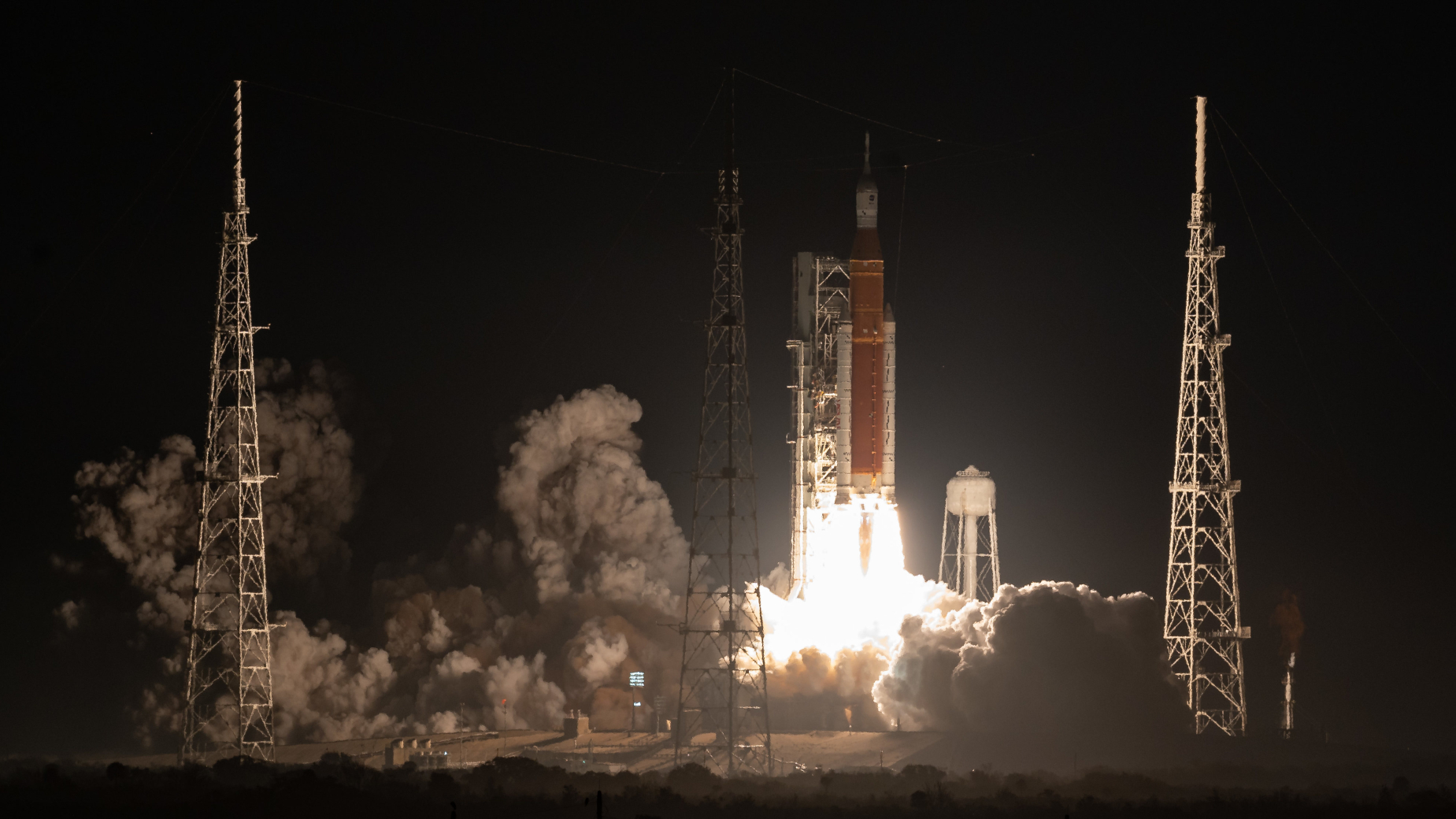Artemis 1 launch success makes NASA's SLS the most powerful rocket ever to fly

SpaceX's Falcon Heavy is no longer the most powerful rocket in the world.
NASA's Space Launch System (SLS) claimed the crown with its debut liftoff on Wednesday morning (Nov. 16), which sent an uncrewed Orion capsule toward the moon on the agency's Artemis 1 mission.
The SLS core stage and its two solid rocket boosters (SRBs) generated a total of 8.8 million pounds of thrust during Wednesday morning's launch, NASA officials said. The 27 Merlin engines that power the Falcon Heavy's first stage, by comparison, produce around 5 million pounds of thrust at liftoff, according to SpaceX's specifications page.
Related: NASA's Artemis 1 moon mission: Live updates
More: 10 wild facts about the Artemis 1 moon mission
Indeed, the SLS isn't just the brawniest rocket in operation today; it's the most powerful launcher ever to fly a successful mission, beating out both NASA's space shuttle vehicles and the iconic Saturn V rocket that sent Apollo missions to the moon half a century ago. (The Saturn V generated about 7.5 million pounds of thrust at liftoff.)
The space shuttle and SLS are close kin, by the way: The SLS core stage is powered by four space shuttle main engines and the new rocket's SRBs are built in part from shuttle-era boosters.
"Successful" is a necessary caveat here. The Soviet Union's N1 moon rocket — its version of the Saturn V — generated about 10 million pounds of thrust, but the vehicle flew just four missions in its short life, all of them failures.
Breaking space news, the latest updates on rocket launches, skywatching events and more!
The SLS's reign will likely be short-lived, however. SpaceX is developing a huge new vehicle called Starship, which is designed to take people and cargo to the moon, Mars and other distant destinations.
Starship consists of a towering first-stage booster called Super Heavy and an upper-stage spacecraft called Starship. Both of these elements are reusable, and both are powered by SpaceX's next-generation Raptor engine, which is considerably more powerful than the Merlin.
Starship will sport six Raptors and Super Heavy will feature 33. The giant booster will generate a whopping 16 million pounds of thrust at liftoff, making it by far the burliest rocket ever to leave the ground.
And that could happen soon, for SpaceX is gearing up for the first-ever Starship orbital test flight, which will use prototypes called Booster 7 and Ship 24.
The company has already test-fired all six of Ship 24's Raptors simultaneously, and it's working its way up the engine ladder with Booster 7 as well. On Monday (Nov. 14), for example, the company test-fired 14 of Booster 7's Raptors during a trial at its Starbase facility in South Texas.
NASA's Artemis program has tapped Starship as its first crewed lander, relying on the SpaceX vehicle to put astronauts down near the moon's south pole on the Artemis 3 and Artemis 4 missions in 2025 and 2027, respectively.
So, if all goes according to plan, the two most powerful rockets ever to fly (successfully) will soon be working toward the same goal: getting humanity back to the moon, this time to stay.
Mike Wall is the author of "Out There" (Grand Central Publishing, 2018; illustrated by Karl Tate), a book about the search for alien life. Follow him on Twitter @michaeldwall. Follow us on Twitter @Spacedotcom or on Facebook.

Michael Wall is a Senior Space Writer with Space.com and joined the team in 2010. He primarily covers exoplanets, spaceflight and military space, but has been known to dabble in the space art beat. His book about the search for alien life, "Out There," was published on Nov. 13, 2018. Before becoming a science writer, Michael worked as a herpetologist and wildlife biologist. He has a Ph.D. in evolutionary biology from the University of Sydney, Australia, a bachelor's degree from the University of Arizona, and a graduate certificate in science writing from the University of California, Santa Cruz. To find out what his latest project is, you can follow Michael on Twitter.
